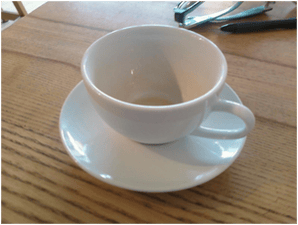I’m not a gadget person or a techno-freak, but even I get excited about apps that are changing what it means to be blind. My good friend and partner in crime, JoAnn Becker, has recently become an iPhone aficionado. In the early days, we shared a good belly laugh when she couldn't answer the bloody thing before the caller hung up. (Turns out using the iPhone as a phone isn't the easiest feature for a blind user.) But each time we hang out, JoAnn has mastered some amazing new app that transforms her smartphone into something else.
As the designated driver wherever we go—and truth be told, if I’m traveling from A to B, I’m already lost—I always come armed with printed directions from MapQuest plus a TomTom for back-up. But on this trip, the TomTom wouldn't charge, and it’s murder to read directions and watch the road at the same time. So JoAnn pulls out her iPhone, Let’s try Google Maps. I listen to her tap-tapping in rapid movements, and in short order a feisty voice says: “Walden Pond. Make a U-turn in 200 yards…. 100 yards… MAKE A U-TURN!” Thirty minutes later, we've got our toes in the pond.
Sitting at Café Fixe later that day, JoAnn smiles, Watch this! Tap-tap-tap-swipe. She holds the iPhone over the table. Flash. Tap-tap. The coffee shop is completely quiet when Siri announces: “White cup and saucer on a wooden table.” WHAT? People glance up from their papers. They don’t realize they have just witnessed a moment in the history of accessibility. A free cellphone app correctly identified and spoke what was in front of us. “The moment was all. The moment was enough,” wrote Virginia Woolf. Never have a white cup and saucer looked so ahhhmaazing!

